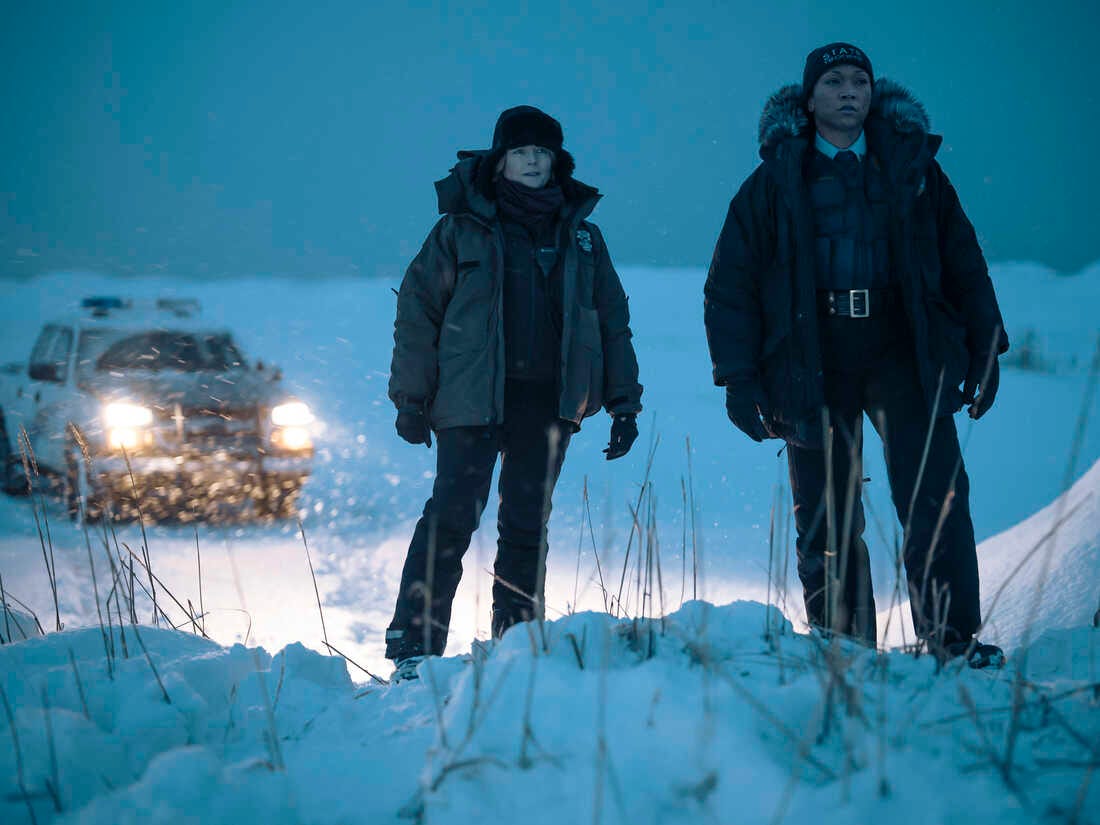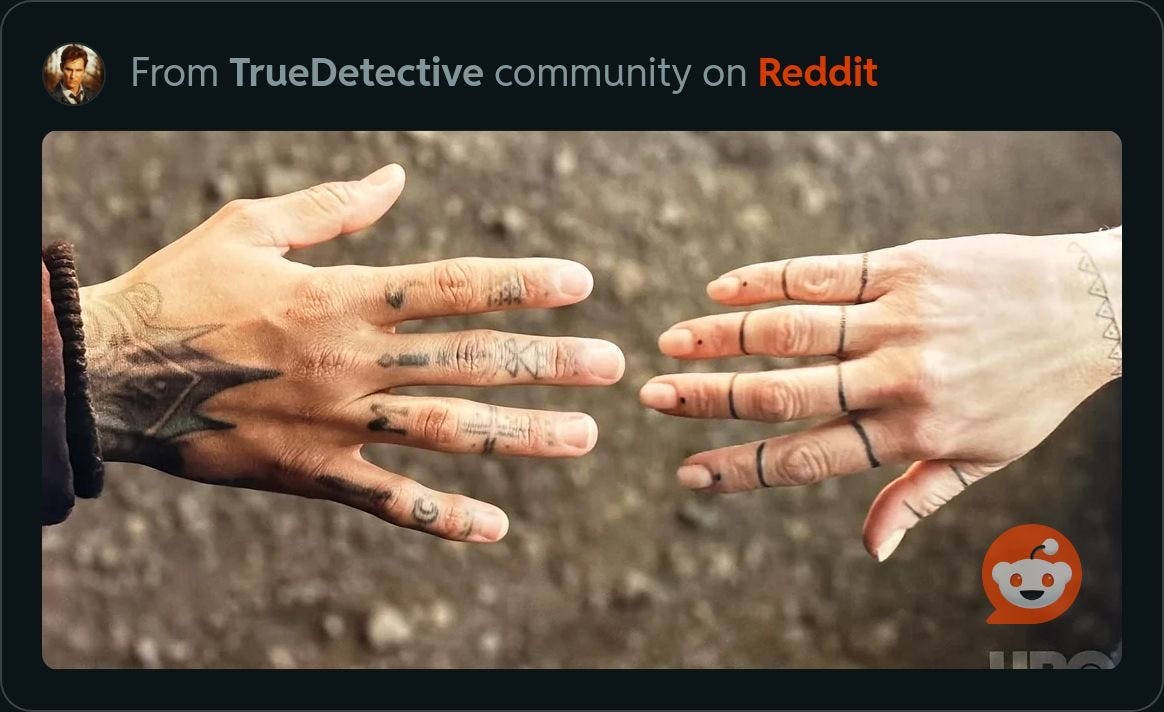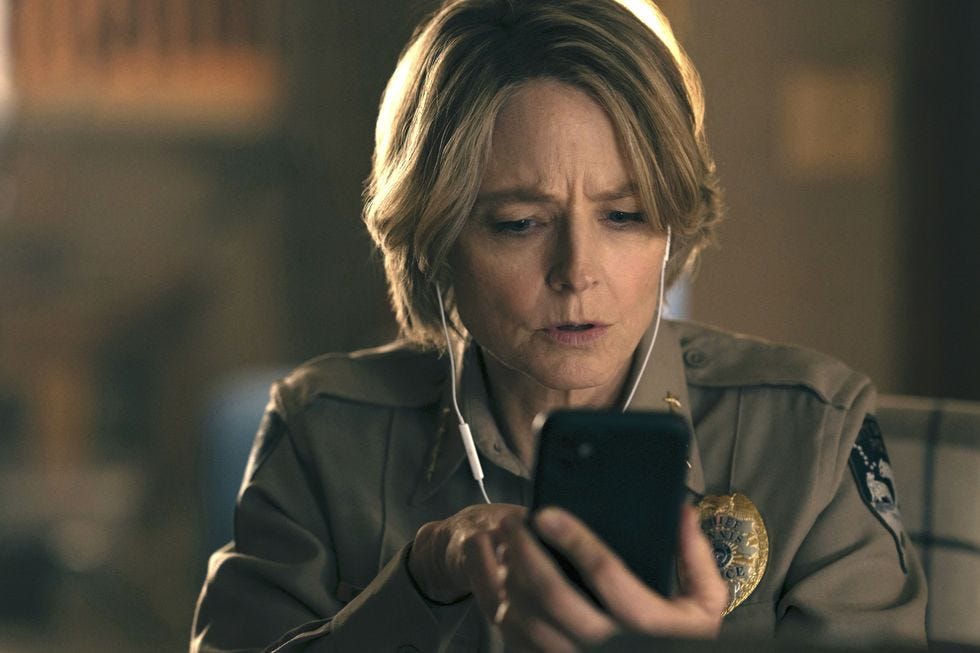True Detective: The Maddening Journey Into Night Country
A Look Inside The Latest Chapter In The Hit Anthology Series
This review contains spoilers regarding the fourth season of True Detective. OMITI will never reveal key details or the murderer. This article is best read after viewing the first episode.
True Detective: Night Country is all anyone is talking about, igniting more theories and arguments among viewers than any other show. Twelve million people watched the finale, which brought with it an unsettling and frustrating ending — or a satisfying conclusion, depending on who you ask. So why is there such a strong difference of opinion?
The history of the True Detective series and mythology established in the first season has played a large part in the reception of future seasons, especially this one. HBO premiered True Detective in 2014. Casting was exciting — the leads were two Southern actors, Woody Harrelson and Matthew McConaughey, longtime friends with great chemistry and a penchant for compatible roles on the big screen. They were well-cast as Detective Hart (Harrelson) and Detective Cohle (McConaughey). Set in Louisiana, the dilapidated barns and trailer parks, mossy oaks and old gas stations out Rust Cohle’s window gave the detectives’ journey to the truth credence and an underlying sense of urgency in a place of desperation. It was incredibly well-written. The dialogue between the two detectives was so memorable that their conversations became as intriguing as the murder investigation itself. The show became one of HBO’s most watched series and garnered two Best Actor nominations for Harrelson and McConaughey at both the Emmys and the Golden Globes, with the series earning five Emmy wins total. True Detective became one of the most critically-acclaimed series on television, let alone HBO.
Harrelson and McConaughey in True Detective. All Images Courtesy of HBO and Max.
The newest season is something altogether different. Director and writer Issa Lopez spearheaded Season Four, True Detective: Night Country, introducing a new chapter in the True Detective anthology series. Lopez aimed for Season Four to stand on its own while still embracing the mythology enveloping the original series. Dedicated True Detective fans were dubious about a return to form with the same level of authenticity the first season delivered, and with good reason. Follow-up seasons to the original series were certainly lackluster by comparison. Season Two with Colin Farrell didn’t fare as well with critics, especially on the heels of such a strong debut with Harrelson and McConaughey. Season Three with Mahershala Ali brought the series back into the forefront of critics’ praise, but didn’t captivate audiences to the same degree.
And Season Four just reached a dramatic conclusion on Sunday with very mixed reactions. So what is the disconnect between the series and its viewers? Why is the television audience so divided with Issa Lopez’s story?
The plot is intriguing and the setting is atmospheric and eerie, which is in keeping with all chapters of the anthology. True Detective: Night Country is centered around a group of missing scientists at the Tsalal science station in Ennis, Alaska. Ennis spends weeks at a time in complete darkness in a supernatural atmosphere, where the dead visit the living and residents easily disappear. In this long stretch of night, Chief Liz Danvers (Jodie Foster) and State Trooper Evangeline Navarro (Kali Reis) are thrown together to investigate the disappearances of the scientists when they realize the case is tied to an earlier murder of an indigenous woman, Annie K. Through this murder there’s a focus on Inupiaq women and their struggles. There’s also an environmental angle with a mine that’s destroying the environment and essence of the town, even as it provides a living for the people who reside there.
True Detective: Night Country borrows elements from a slew of television shows, especially The X-Files. The series uses the atmosphere of Iceland (subbing for Alaska) to the story’s advantage similarly to A Murder At The End Of The World. There are also similarities between this series and Lost, not to mention Twin Peaks and Louise Penny’s Three Pines series.
So what ties Season Four to the OG True Detective? We learned in Season One that Travis Cohle, Rust’s father, uprooted him from Texas and moved to Alaska when he was young. Rust didn’t stay, eventually moving back to The South as soon as he could because “all I could remember was at least it never got cold. My old man always made like I let him down that way, because I had no loyalty.” In Season Four, we first hear about Travis Cohle from Rose Aguineau (the underutilized Fiona Shaw) who describes his death to Navarro. He appears to Aguineau in a vision — not unlike Bob from Twin Peaks — and leads her to an important discovery. And then there’s the Tuttle family, responsible for establishing the cult in the first season, funded the Tsalal research facility in Ennis, Alaska where the scientists worked. Danvers’ repeated retort throughout the investigation, “You’re not asking the right question, ask again” is a callback to Rust Cohle from the first season when he demands Hart to “start asking the right f’n questions.” Fluid morality is in keeping with the original series. So is gratuitous sex, violent underpinnings and superstition steeped in folklore. But at times the references to Season One feel forced and confusing, as if thrown into the storyline in an attempt to make connections stronger between Louisiana’s characters and mythology. Certain moments feel disingenuous.
Supernatural elements intertwined with murder has always been an integral component of True Detective. Cohle introduces the myth surrounding The Yellow King to Hart in an existential conversation in the first season. A popular theory among dedicated fans of True Detective ties the mythological Sedna to the murder mystery. In the Inuit story of Sedna, a girl becomes a goddess after she's thrown into the ocean by her father. In retellings, Sedna is desperately grasping the boat, trying to pull herself up. Her fingers are severed by him, leaving her to drown. Sedna’s fingers are referenced in a drawing by Deputy Prior’s son Darwin of a girl with missing fingers. A woman in the first episode, abused by her husband, had missing fingers. This comes into play again in later episodes.
So where is the conversation between Danvers and Navarro about Sedna?
The series took a nonsensical turn beginning in the third episode; storylines became implausible, the actions of characters seemed off, the actual investigation was pushed to the background as events unfolded. True Detective fans longed for the intuitive, observant detectives from the original season. It also became clear the show would have benefited from a bigger contrast between the two main characters, like Hart and Cohle, Mulder and Scully, even Cooper and Truman. The series needed to be eight episodes instead of six to let the story breathe and make sense, for stronger character development and an expansion of the investigation. Viewers were left wanting more of the brief conversations between Navarro and Danvers that somehow were saved for the end.
True Detective: Night Country loses its focus as a meaningful story when it concentrates on a group rather than an individual, on the whole rather than the part. That’s not to say bringing the struggles of a marginalized minority to light isn’t important to the story; however, developing the background and relationship between the detectives through meaningful dialogue is just as important. This is a key component to the original True Detective series that Night Country is missing.
That’s not to say this chapter of the True Detective anthology isn’t a worthy show. There are dozens of Easter Eggs throughout all six episodes. Seeing Jodie Foster back in the role of a detective is reward enough for many viewers. Kali Reis is riveting and a worthy counterpart to Foster. Iceland — as Alaska — is beautiful, even shrouded in darkness. But the frustration for fans lies in missed opportunities, a lack of coherence and cohesiveness in the story arc. Yet it brings to light stories of an indigenous people that are rarely told, and Issa Lopez is careful to do it in a meaningful way. No matter how it compares to the original, True Detective: Night Country is a story worth telling.
After You Read: Save Our Sisters campaign, https://alaskapublic.org/2020/09/25/save-our-sisters-alaska-telling-stories-of-rape-and-abuse-as-a-path-toward-healing/
HBO’s Official True Detective: Night Country page, https://www.hbo.com/true-detective
Song of the Day: Bury A Friend by Billie Eilish






A much enjoyed review, fascinating.
Thanks for this great analysis, Reda. I’m grateful to you for providing the context that was missing, particularly the references to Season One. I agree, six episodes were inadequate. So many missed opportunities to develop the characters, to let the story evolve in an organic way. And Rose! So disappointing that she wasn’t brought in as she should have been. Sigh.